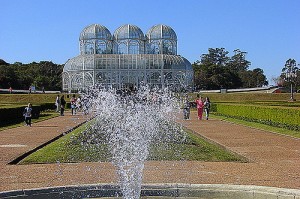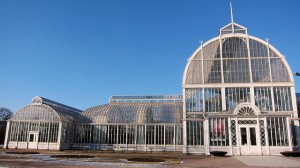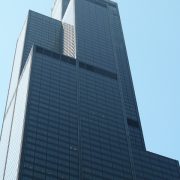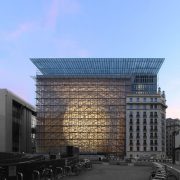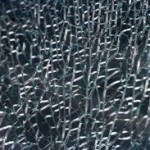Iconic Glass Structures: The Botanical Garden of Curitiba
Periodically, we look at iconic glass structures. Today, we’ll take a look at The Botanical Garden of Curitiba in Curitiba in the Brazilian state of Parana. The Botanical Garden of Curitiba is relatively new. It opened its doors in 1991. The Botanical Garden, also known as Jardim Botânico Fanchette Rischbiete, is designed to resemble a French royal garden, such as the one at Versailles, and features waterfalls and fountains, nestled among neatly manicured hedges and angular stone walking paths.
Glass greenhouse modeled after Crystal Palace in London
The greenhouse was designed by architect Abraão Assad, who was inspired by the Crystal Palace in London. The soaring glass structure is visible from the main entrance, and is situated to catch the rising and setting Sun. Even though it is not nearly as large as the Crystal Palace, the greenhouse is impossible to miss! The building consists of a metal and glass structure, with three separate silos. The white metalwork serves as a decorative frame for the glass in the greenhouse, creating vibrant geometric patterns. The Gardens is on a significant plot of land, and contains a manmade forest dedicated to the region’s native plants.
The Garden is also the site of the Museum of Franz Krajcberg. Franz Krajcberg was an environmentalist who was passionate about conservation. The Museum is dedicated to conservation education, and features classrooms, exhibit spaces and materials to inform visitors about the importance of conservation and the role of the Garden in that mission. The Museum is also a research facility. It holds a reference collection of native Brazilian flora, including samples from Brazil’s endangered rain forests, and botanists from around the world come to the Museum to study rain forest flora.
The Botanical Garden of Curitiba isn’t the only garden inspired by the Crystal Palace. The Palm House in Sweden, which opened in 1878, is also modeled after the Crystal Palace. The first Crystal Palace was built in Hyde Park as a temporary structure to house the Great Exhibition of 1851. It proved to be such a popular attraction that the original building was torn down and rebuilt as a permanent structure on what is now called Crystal Palace Park. The recreated building re-opened in 1854 at the intersection of four boroughs in London, and stood until 1936, when it was destroyed by a fire. It was razed and was not rebuilt. In 2014, a Chinese developer announced ambitious plans to rebuild Crystal Palace on its former site, but the Bromley council, which owns the land, could not come to terms with the developer on crucial issues related to the building, and the plan was scrapped.
If you’re looking for inspiration for a glass decorating project, please check out the rest of our site. If you’d like to purchase Glassprimer™ glass paint, please visit our online store .
Photo Credit, The Botanical Garden at Curitiba, Curitiba, Parana Brazil: Marcio Cabral de Moura , via Flickr.com
Photo Credit, Palm House, Gothenburg, Sweden: David Jones, via Flickr.com

